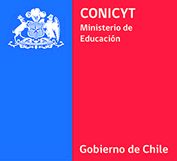 |
CONICYT PAI MEL 81105006 |
|
Generation of key information for the management of marine resources in the north of Chile: population and food web structure, trophic ecology of candidate aquaculture species and the environmental impacts of mariculture |
Versión en castellano
This collaborative project funded by CONICYT through the PAI MEL scheme (Concurso Regional de Atracción de Capital Humano Avanzado del Extranjero: Modalidad de Estadías Largas) brings together experts from the UK and Chile. Its broad objective is to provide marine managers and scientists in Northern Chile with information that is needed for the sustainable exploitation of marine resources as well as the diversification of marine fisheries and aquaculture in the Antofagasta region. In a policy context, the project aims to support several priority areas of development as recognised by the Chilean Government (Fishing, Aquaculture and Environmental Sustainability).
Background.
Today, like throughout history, marine resources remain hugely important to the people of Chile: fish and shellfish are staple food items, and demand continues to grow. Although Chile is famous for its offshore fisheries for pelagic fishes such as the Peruvian anchoveta Engraulis ringens, much of the marine products consumed by humans in the North of Chile are actually from shallow-water habitats located closer inshore in the neritic and sub-tidal zones. These fish and invertebrates (molluscs and crustaceans) are typically captured by artisanal fishers operating either from small boats or the shore.
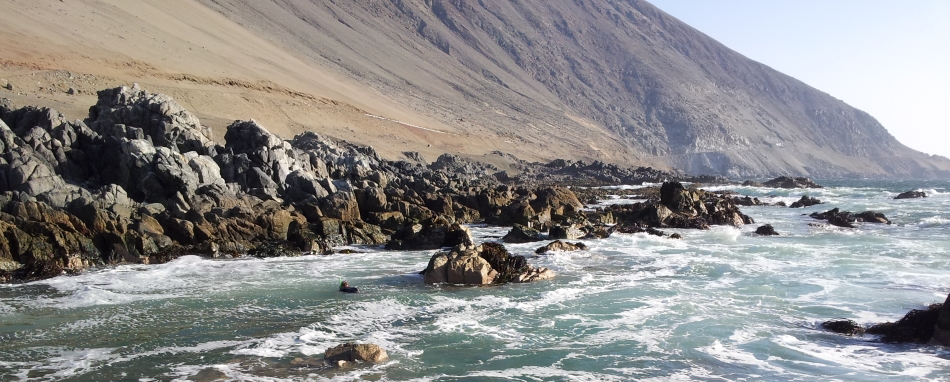
The productive coastal zone of Northern Chile provides food and employment for many.
Although increasingly seen as a healthy option and recommended by health professionals, such increasing demand has resulted in an acceleration in exploitation rates and observable detrimental impacts that threaten the sustainable future of wild stocks. Interest in aquaculture has developed in parallel with this increased demand for wild marine resources, especially as Chile aims to diversify sources of employment and income for its population, whilst also ensuring exploitation of Chile's substantial natural resources is sustainable.
As a long, thin country that extends across >4000 km, Chile is famously diverse in terms of its terrestrial geography. Such diversity also extends to the country's economically important coastal zone which is also heterogeneous in terms of ecology, biogeochemistry and biodiversity. This natural variation represents an opportunity with regards to Chile's capacity to develop diverse fishery and aquaculture sectors. However, such heterogeneity means that in terms of management of marine resources managers and other stakeholders require locally-relevant information, which is often lacking.
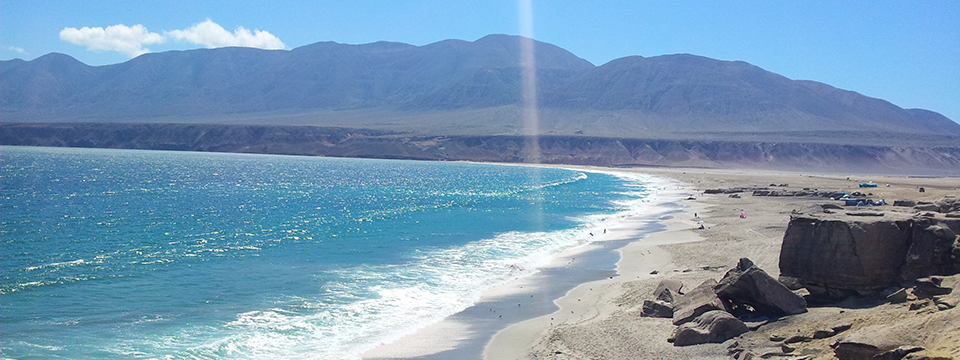
The coast of Northern Chile is a spectacular place to work.
This is particularly relevant in the north of Chile, where the marine ecosystems supporting wild-capture fisheries for fin- and shellfish are strongly influenced by the Humboldt Current. The strength of this influence varies, both temporally, due to interannual variation in the strength of the El Niño-Southern Oscillation and spatially, due to the effect of local geographical features (e.g. bays). This is manifested by marked spatiotemporal variation in the intensity of marine upwelling, resulting in significant temporal (interannual and seasonal) and spatial (regional and local) differences in the ecological processes and communities that support potential fisheries production. Managers and scientists need to understand how such variation influences the capacity to develop fisheries and aquaculture in these areas.
This project aims to provide some of the fundamental information required to permit the sustainable exploitation of marine resources in northern Chile through an ecological assessment of food web structure (and its variation) in key capture fisheries operating in the region. Central to the description of the food webs supporting regional fisheries is the key question of the relative importance of contributions from pelagic and benthic primary producers to subtidal consumers. Current management is based on the theory that the nutrients and energy supporting subtidal ecosystems (and their fisheries) are largely derived from benthic sources (macroalgae and benthic microalgae). However, in a location where upwelling (and associated pelagic production of phytoplankton) is so high, the potential exists for significant transfer of pelagic-derived energy and nutrients inshore where they may subsidise production of consumers in benthic habitats.
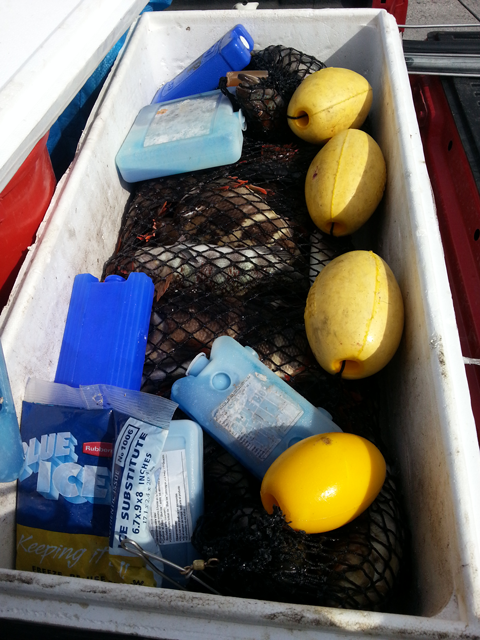
A spearfishing catch awaits transport.
This work aims to provide improved knowledge of these taxa, and their trophic relationships (e.g. predator prey relationships) and to develop quantitative measures of food web structure that are empirical rather than model based (e.g. Ecopath), and of direct relevance to those interested in the management of marine resources. In order to do this, the project follows a multidisciplinary approach using genetic, and quantitative analysis of stomach contents as well as analysis of δ13C and δ15N stable isotope ratios and fatty acids of key fishes as well as the key primary producers from pelagic and benthic habitats.
Beyond food webs, we have also examined population structuring in key fish species subject to exploitation using a range of measures including size, stable isotopes, fatty acids and population genetics. This information will allow us to understand ecological variation along spatial and temporal scales but will also provide further information on the impacts of energetic connectance between inshore and offshore ecosystems and how this affects long-term management of exploited stocks.
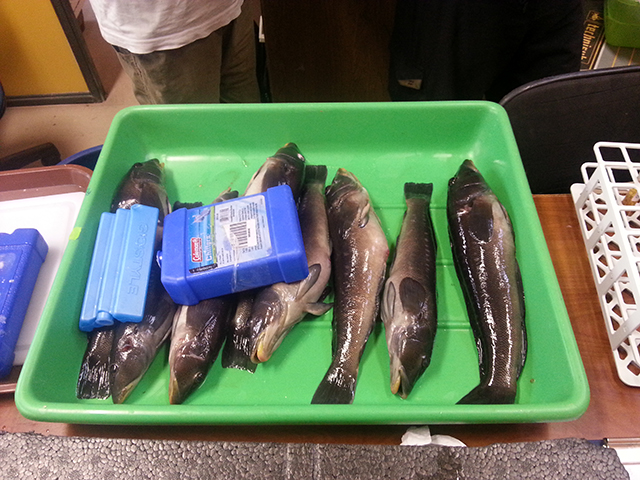
Recently sampled fish (Rollizo Pinguipes chilensis) await processing in the laboratory
Aquaculture:
Aquaculture in Chile has largely focused on the production of non-native taxa. It has also unfortunately been associated with significant environmental and ecological damage to native habitats and species. Future sustainable development of aquaculture in Chile is likely to involve the culture of both native and non-native species. This requires the provision of reliable information regarding the ecology of target aquaculture species and those factors limiting their sustainable production, including diet, habitat use and predator-prey interactions throughout their life cycle. Using a combination of traditional and more recently developed techniques, we have followed a multidisciplinary approach to describe the trophic ecology and habitat use of a number of candidate aquaculture species in Northern Chile, including fishes, molluscs and crustaceans.
Barriers to the sustainable development of aquaculture and fishery activities include the often negative environmental effects of these processes. For instance, both in Chile and elsewhere, receiving ecosystems have undergone degradation due to pollution by excess nutrients or through the escape of non-native species originating from aquaculture activities. The project provides several measures to examine current and future environmental and ecological impacts of aquaculture activities in the Antofagasta region. Using biochemical methods, we can examine the sensitivity of potential aquaculture sites to development, and their long-term response to aquaculture activities e.g. the addition of excess nutrients.
Outputs:
The project aims to provide key information for the sustainable management of natural resources and the development of aquaculture in the Antofagasta region through the production of a series of scientific articles and the training and development of local scientists and students from the collaborating institutions. At the core of the project is the development of local expertise in the biochemical methodologies that form the backbone of the proposal, namely fatty acid, stable isotope and molecular techniques to understand the trophic ecology and habitat use of consumers, and the ecological impacts of aquaculture.
A number of postgraduate students have been supported by the project, including students from Chile and the UK. The results of the study have been presented in a series of research seminars at UA and other partner universities, and international and national conferences. Non-specialist talks for the public and secondary school students will be given prior to the end of the project.
A series of courses for advanced undergraduates and postgraduate research students have been provided under the auspices of the project. A final course on isotope ecology will be held in early 2015.
Project Team:
| Name | Affiliation | Role | Contact | |
|---|---|---|---|---|
 |
Chris Harrod | UA | Principal Investigator | chris@harrodlab.net |
 |
Felipe Docmac | UA | Research Assistant | felipe.docmac@uantof.cl |
 |
Martin Thiel | UCN, Coquimbo | Co-investigator (coastal ecosystems) | thiel@ucn.cl |
 |
David Véliz | UCH | Co-investigator (population structuring) | dveliz@uchile.cl |
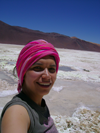 |
Cristina Dorador | UA | Co-investigator (genetics) | cristina.dorador@uantof.cl |
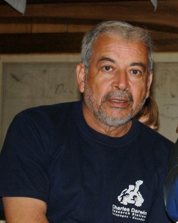 |
Marcelo Oliva | UA | Co-Investigator and academic counterpart | marcelo.oliva@uantof.cl |
 |
Miguel Araya | UNAP, Iquique | Collaborator | miguel.araya@unap.cl |
